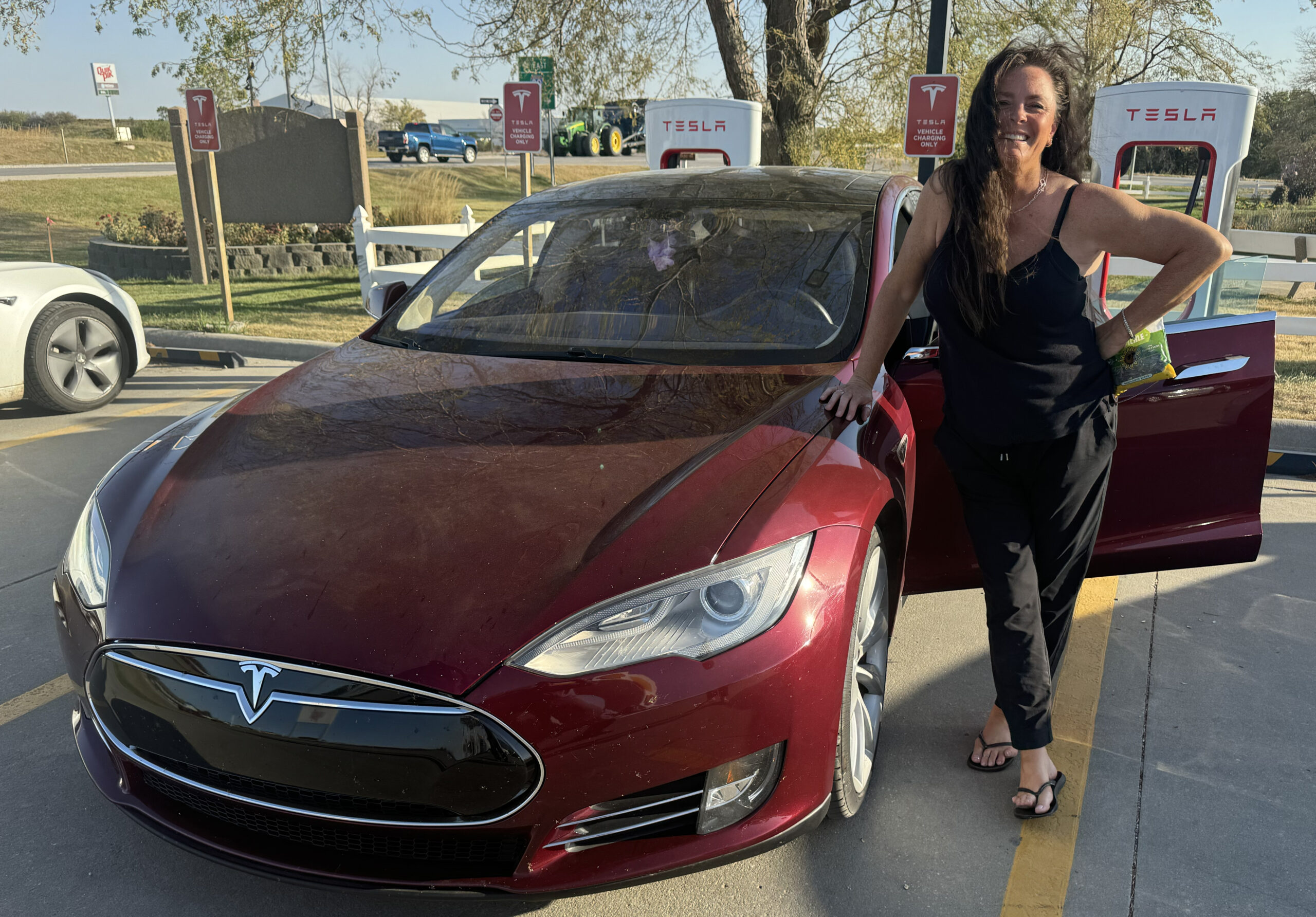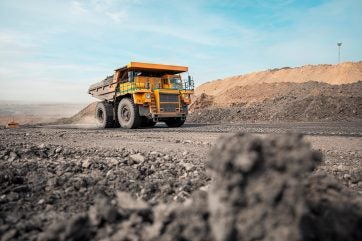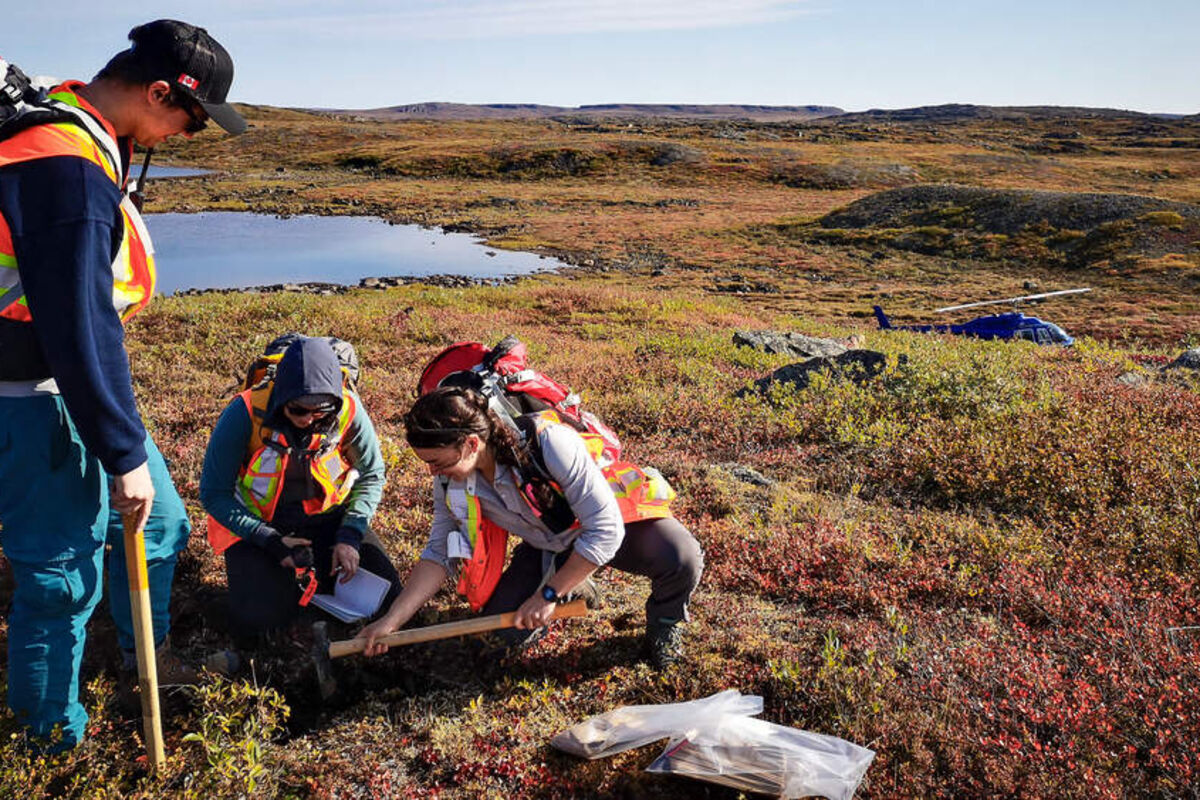Sign up for daily news updates from CleanTechnica on email. Or follow us on Google News!
In this article, I relate our Supercharging adventures on a long-distance EV road trip going west. My wife and I have just completed our annual trip with two big ebikes on back on a receiver mounted tray-type bike rack (see Figure 1) from Three Lakes in Northern Wisconsin to Lindon, Utah, near Salt Lake City. We normally take three days in our Tesla Model 3 Long Range just like we did previously with our Toyota Highlander gasmobile. However, this time we made a stop in Madison, Wisconsin. The detour added a day to our trip.Do we have to make too many stops and spend too much time charging? I start the trip with an overnight charge to 80% and I increase the charge limit to 90% an hour before departure. You will see below that we charged 21 times on our four-day, 1601-mile trip. Three of those were where we spent the night, so didn’t increase our travel time. I will explain below why we charged so many times. I estimate that 75% of the Superchargers are in the parking lot of a hotel or convenience store with access to a clean bathroom. The others are in supermarket parking lots. At age 84, I don’t pass up a chance to use a bathroom. Meanwhile, my wife Mary walks our small dog Zuni.
If we are hungry, we stop for fast food and eat while charging. On this trip, I once walked the 200 yards to a McDonalds next door. Getting out and walking for a bit is good for the health of your legs and will prevent thrombosis. In any case, if we only need charge to 60%, we are ready to go after the bathroom break. If we need to charge to 80% or 90%, we need to sit a bit longer and browse the internet for another 15 min. Bottom line: we still make our 500-mile goal for the day and find the trip less stressful. On this trip and our others from coast to coast, we have never found a Tesla Supercharger out of order. Out of hundreds of stops, we only had to wait once for 5 minutes for a free stall. Most Superchargers have 8 or more stalls and we have only found a few cases where an individual stall was not working.
My Supercharging Strategy
The two big mountain ebikes on back destroy the hard work Tesla has done to reduce the coefficient of friction of the car. It’s a little like dragging a sea anchor behind the car. The advertised range on my Tesla Model 3 Long Range was 310 miles, but it is much less with two big ebikes on back. However, charging is not optimal for us when the Superchargers are more than 100 miles apart. Why? Because then we need to charge over 80%. Our charging would start at a rate of 135 to 200 kW depending on the charger. However, by the time we reach 80% state of charge (SOC), the charging rate is already down to about 50kW, and it’s even slower if you need reach 90% SOC. Tesla reduces the charge rate as the battery fills up to prevent damage to the battery. Bottom line: It costs a lot of time to charge over 80% SOC, so it actually saves time to stop more often. I joke that at 84 my bladder and my Tesla have the same range.
Note: If you enter the next Supercharger into your destination, your Tesla will precondition the battery for faster charging when you arrive. When I didn’t precondition the battery, I found myself charging at less than 50 kW. Also, you definitely need to charge just before you stop for the night. If you wait to charge on a cold battery in the morning, you will be charging at even less than 50 kW.
Note the orientation of our car at the Chamberlain Supercharger in Fig. 1. We don’t back into the stall like everyone else if we can help it. This is because the rear distance sensors don’t help you with bikes on back. On the regular Tesla back-in Superchargers stalls, my wife needs get out and tell me exactly how far to back up. Some Superchargers have one drive-by stall which is perfect for us. If there were no other cars at the Supercharger, we parked sideways as you see in Fig. 1. This is a small problem for us, but a non-negotiable requirement if you are pulling a trailer. The only alternative is to detach the trailer when you charge. At the Lincoln, Nebraska, Supercharger, we were shocked to see a man pulling a U-Haul trailer behind his Model Y, which you can see in Fig. 2 below. He parked sideways like we usually do. It was a really interesting story. The older man was driving his brand new Model Y from California to Manhattan, NY, to act as guardian to his 10-year-old granddaughter who was chosen for a role in the play Gypsy on Broadway. He was going to watch over her for the next 6 months. He said he could sometimes drive 200 miles between Superchargers, but only if he reduced his speed to 55 mph.

Another fun discovery: At the Supercharger in Shelby, Iowa, we met a lady driving her Model S serial number 75 delivered in 2012 (see Fig. 3). In 12 years, she only had about 30,000 miles on the odometer.

Another fun sight on Interstate 80: Just like on our spring trip east this year, we saw two huge tractor trailer rigs carrying incredibly long wind turbine blades (like you see in Fig. 4)

What did Supercharging cost on our recent 1601-mile trip? Thanks to readers using my Tesla referral code, my Supercharger cost was zero. Strangely, at about half the Superchargers, I could see (on my screen) my theoretical bill increasing moment by moment while charging. At other Superchargers, the charge cost read zero during the whole charge. However, looking at my credit card bill, I found out that I was not billed for any Supercharging during the trip.
Supercharging runs from Three Lakes, Wisconsin, to Lindon, Utah:
- Three Lakes, Wisconsin, to Wausau, Wisconsin: 84 miles
- Wausau, Wisconsin, to Madison, Wisconsin: 143 miles
- Madison, Wisconsin, to Dubuque, Iowa: 94 miles
- Dubuque, Iowa, to Cedar Rapids, Iowa: 74 miles
- Cedar Rapids, Iowa, to Grinnell, Iowa: 76 miles
- Grinnell, Iowa, to Des Moines, Iowa: 60 miles
- Des Moines to Shelby, Iowa: 88 miles
- Shelby, Iowa, to Lincoln, Nebraska: 94 miles
- Lincoln, Nebraska, to Grand Island, Nebraska: 95 miles
- Grand Island, Nebraska, to Lexington, Nebraska: 77 miles
- Lexington, Nebraska, to Gothenburg, Nebraska: 101 miles
- Gothenburg, Nebraska, to Kearny, Nebraska: 41 miles
- Kearny, Nebraska, to North Platte, Nebraska: 97 miles
- North Platte, Nebraska, to Ogallala, Nebraska: 51 miles
- Ogallala, Nebraska, to Sidney, Nebraska: 68 miles
- Sidney, Nebraska, to Cheyenne, Wyoming: 100 miles
- Cheyenne, Wyoming, to Laramie, Wyoming: 56 miles
- Laramie, Wyoming, to Rawlins, Wyoming: 96 miles
- Rawlins, Wyoming, to Rock Springs, Wyoming: 108 miles
- Rock Springs, Wyoming, to Evanston, Wyoming: 101 miles
- Evanston, Wyoming, to Lindon, Utah: 99 miles
That’s 21 Supercharger runs for 1,601 total miles.
Note: Only 17 required a stop during the day.
Total Supercharger Cost = $ 0.0
I estimate the efficiency of a similar size sasmobile with two big ebikes on back = 25 mpg.
1601/25 = estimated 64 gallons used
Gas prices ranged near $3.00 for the trip
Estimated Total Cost for a Gasmobile = $192.00
Savings ~ $200. Thank you to those of readers who used my referral code!
The following Tesla drivers are Supercharging for free: Those who have referrals like me, those who have one of the original Model S or X Teslas that came with lifetime free Supercharging, and those who were able to transfer their free Supercharging to a new Tesla during one of Teslas promo offers offering that. I estimate that the cost for driving a similar size gasmobile on long trip is about the same as the of the cost of driving a Tesla for those without free Supercharging. However, remember that when charging at home the cost of driving an EV is about ⅓ the cost of driving a gas car.
Adding the detour through Madison, Wisconsin, to our western trip this year meant that we were doing the whole thing on I-80 instead of mostly on I-90. The good part is that the Superchargers are more closely spaced. The bad part is that the traffic is much heavier on I-80 and traffic through Des Moines and Omaha is worse.
Note: Most Superchargers are spaced every 70 to 100 miles apart on Interstate highways. In this case, I set my speed to 75 mph and don’t worry about it. The maximum spacing on my route was 143 miles from Wausau, Wisconsin, to Madison, Wisconsin. There is a Supercharger in Stevens Point, Wisconsin, in between which would have reduced the distance between chargers. Next time I will stop there rather than Wausau. The other thing that will reduce the range of your car is a headwind. We had a 25-mph headwind in eastern Wyoming. For strong headwinds and longer charger spacing, I will start with my speed at 60 mph or even 50 mph and turn on my flashers on to make sure that I will make the next charger. I watch the estimated arrival SOC for the next Supercharger. If the estimated arrival SOC increases, I increase my speed one mph at a time. I usually find myself at 75 mph for the last ~40 miles.
Normally, Tesla Superchargers are less than one mile off the Interstate Highway. However, in Cheyenne, Wyoming, the Supercharger was not out of the way, but you had to drive 15 miles through the town to get to the charger. When we got there, there were only 4 stalls and we were charging at less than 50 kW. The next stop in Laramie, Wyoming, was only 56 miles away, but with a 25-mph headwind, it was a challenge to make it. Please, Tesla: Install a 250-kW charger with 8 or more stalls near I-80 in Cheyenne, Wyoming. On a previous trip driving from Wisconsin to North Carolina, there was one detour of ~50 miles. Otherwise, we have never had to make a detour to reach a Supercharger on an Interstate Highway.
CCS to Tesla Charger Adapter
Crisscrossing the USA from Wisconsin to North Carolina, North Carolina to Utah, and Utah to Southern California, Tesla Superchargers are a godsend. However, there are a few places I know, like the North Rim of the Grand Canyon and some parts of the Upper Peninsula of Michigan, where the Tesla Supercharger system is inadequate. I’m sure that there are many other places off the beaten track where driving your Tesla would be difficult. The nearly universal standard for non-Tesla charging is CCS.
In the last few years, Electrify America, car dealerships, and other companies have put in thousands of CCS chargers. With money from President Biden’s Bipartisan Infrastructure Bill, there will be many more thousands of CCS chargers installed around the country in the next years.
If there is a place you want to go but you can’t because there is no Supercharger on your route: Bring up the PlugShare app on your phone. Switch the car specification from a Tesla to, say, a Mustang Mach-E and see if there are CCS chargers that would make the trip possible.
Find the CCS-to-Tesla adaptor on Tesla’s website and order one for $250. But not so fast! If your Tesla was purchased before October of 2020 like mine, it won’t work. Schedule an appointment with Tesla Service to have your car upgraded so that the CCS-to-Tesla adapter will work. The last time I tried this, Tesla said the upgrade was not available yet!
Tesla’s Superchargers have become the North American Charging Standard (NACS). Nearly every car manufacture is planning to use them in the next few years. This could mean that Tesla Superchargers will become busier, but Tesla will also have government money to build more chargers. Also, I expect non-Tesla chargers to convert some stalls to NACS, so you should be able to plug in your Tesla at any fast charger without an adapter in the future.
Referral Program: If you are buying a new Tesla, Tesla has reactivated its referral program. If you find any of my articles helpful to you, please use my referral link: https://ts.la/arthur73734 (be sure to use it when you make your order). If you are buying a new Tesla and use my link, I believe you’ll receive $1,000 off the purchase price of a Model S or X, or $500 off the price of a Model 3 or Y. You will also get 3 months of Full Self-Driving (Supervised). Just be prepared to intervene immediately if it screws up.

 Chip in a few dollars a month to help support independent cleantech coverage that helps to accelerate the cleantech revolution!
Chip in a few dollars a month to help support independent cleantech coverage that helps to accelerate the cleantech revolution!
Have a tip for CleanTechnica? Want to advertise? Want to suggest a guest for our CleanTech Talk podcast? Contact us here.
CleanTechnica uses affiliate links. See our policy here.
CleanTechnica’s Comment Policy



